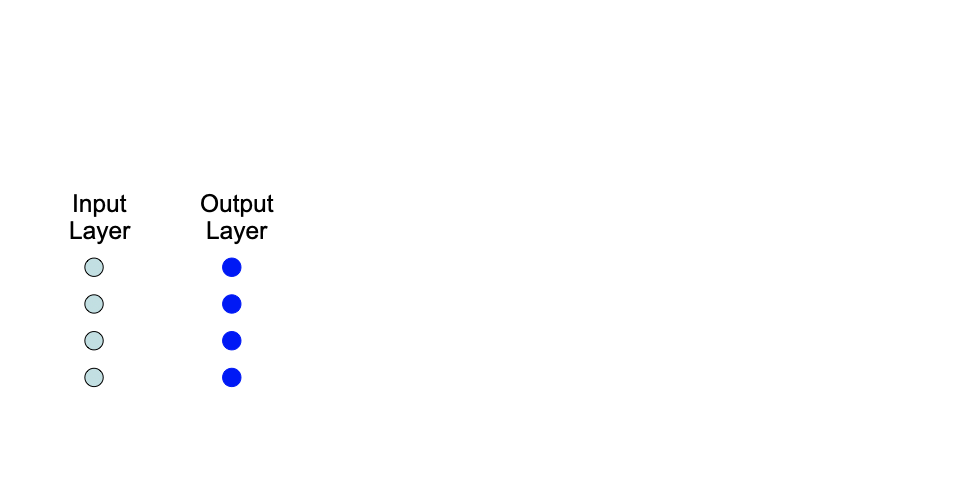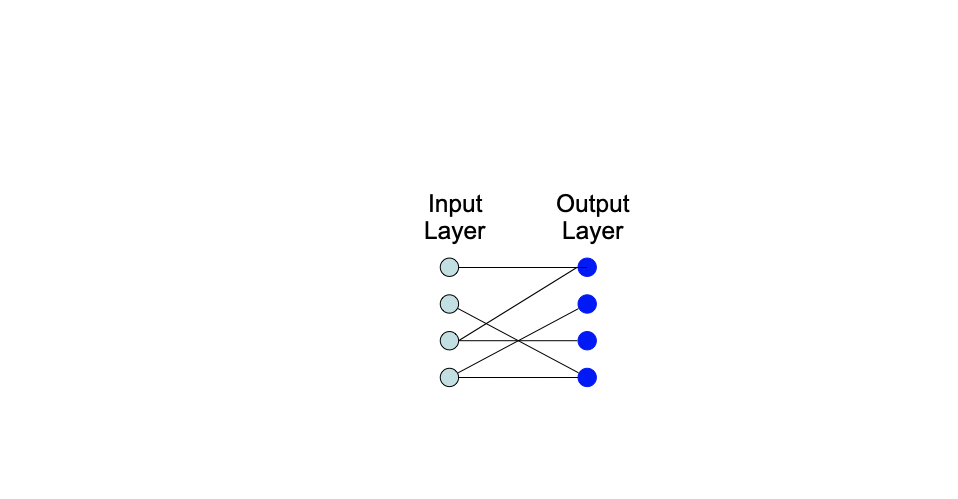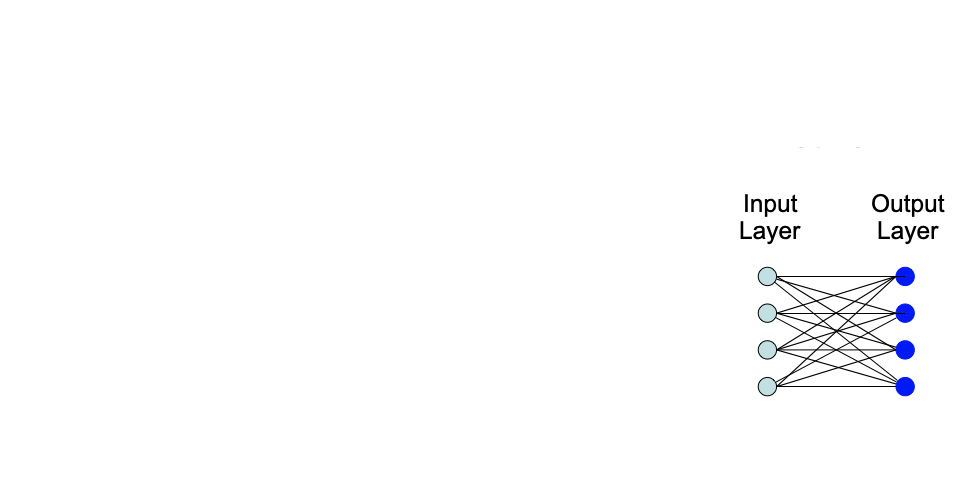Lecture 2 Exam 3 340
1/72
There's no tags or description
Looks like no tags are added yet.
Name | Mastery | Learn | Test | Matching | Spaced |
|---|
No study sessions yet.
73 Terms
Sometimes an input can have the OPPOSITE effect as LTP → sometimes it can
WEAKEN
Sometimes an input can have the OPPOSITE effect as LTP → sometimes it can WEAKEN =
= Long-Term Depression (LTD)
—?— frequency stimulation produces LTD
LOW
—?—- frequency stimulation produces LTP
HIGH
Psychological factors influence observation of LTP or LTD:
NOVEL environment w/ a STRESSED animal → observe ?
(observe) LTD
Both LTP and LTD depend on——
the NMDA Receptor
If you ONLY had LTP:
you would be able to learn but eventually your network gets SATURATED (all the inputs connect together making it harder and harder for networks to discriminate & your brain would get full)
If you ONLY had LTP: you would be able to learn but eventually your network gets SATURATED (——?——-)
(all the inputs connect together making it harder and harder for networks to discriminate & your brain would get full)
The LTD KEEPS the network from—-
getting TOO SATURATED
The LTD KEEPS the network from getting TOO SATURATED
The depression helps keep you in an ——?—— where the network is actually functional where each input produces a DISTINCT activity pattern in the output network
INTERMEDIATE ZONE
The LTD KEEPS the network from getting TOO SATURATED
The depression helps keep you in an INTERMEDIATE ZONE where the network is actually functional where each input produces ——— in the output network
a DISTINCT activity pattern in the output network
You need BOTH LTD & LTP:
LTP ——-connections
LTD keeps connections from getting saturated
ENABLES
You need BOTH LTD & LTP:
LTP ENABLES connections
LTD keeps ——-?—- from getting saturated
(keeps) connections

What kind of network is this?
An Untrained Network

What kind of network is this?
A Trained Network

What kind of network is this?
A Saturated Network
LTP length depends on structural modifications:
growing new synaptic connections (which depends on Gene expression & Protein synthesis)
LTP length depends on structural modifications:
growing new synaptic connections (which depends on ——?——-)
(Gene expression & Protein synthesis)
LTP length depends on structural modifications:
growing new synaptic connections (which depends on Gene expression & Protein synthesis)
Uses CREB to engage ——-?——
genes that enable Long-term synaptic modification that enable things like anoretic sprouting and more connections to be formed
LTP length depends on structural modifications:
growing new synaptic connections (which depends on Gene expression & Protein synthesis)
Uses CREB to engage genes that enable Long-term synaptic modification that enable things like anoretic sprouting and more connections to be formed
CREB gets engaged →
Gene transcription factors get engaged
LTP length depends on structural modifications:
growing new synaptic connections (which depends on Gene expression & Protein synthesis)
Uses CREB to engage genes that enable Long-term synaptic modification that enable things like anoretic sprouting and more connections to be formed
CREB gets engaged → Gene transcription factors get engaged →
→ which makes proteins
LTP length depends on structural modifications:
growing new synaptic connections (which depends on Gene expression & Protein synthesis)
Uses CREB to engage genes that enable Long-term synaptic modification that enable things like anoretic sprouting and more connections to be formed
CREB gets engaged → Gene transcription factors get engaged → which makes proteins →
→ that then enables long term modifications
How to test if a new kind of learning/ memory is dependent on the NMDA receptor:
Use drug NMDA receptor ANTAGONISTS ( like APV or MK-801)
Drug NMDA receptor ANTAGONISTS:
APV & MK-801
How to test if a new kind of learning/ memory is dependent on the NMDA receptor:
Use drug NMDA receptor ANTAGONISTS ( like APV or MK-801)
APV and MK-801 ——-?——
BLOCK activity at the NMDA receptor = NMDA receptor antagonists
How to test if a new kind of learning/ memory is dependent on the NMDA receptor:
Use drug NMDA receptor ANTAGONISTS ( like APV or MK-801)
APV and MK-801 BLOCK activity at the NMDA receptor = NMDA receptor antagonists
Suppose:
Before the strong depolarization → give NMDA antagonist drug (APV or MK-801) =
= NO LTP
How to test if a new kind of learning/ memory is dependent on the NMDA receptor:
Use drug NMDA receptor ANTAGONISTS ( like APV or MK-801)
APV and MK-801 BLOCK activity at the NMDA receptor = NMDA receptor antagonists
Suppose:
Before the strong depolarization → give NMDA antagonist drug (APV or MK-801) = NO LTP
Induce LTP → give NMDA receptor antagonist drug (APV or MK-801) =
NO EFFECT ON LTP
NMDA receptor antagonist drugs block the ——?——- of LTP but not the —-?—— of LTP
INDUCTION , ( not the) MAITENECE/ EXPRESSION
Morris Water Maze:
Give MK-801 BEFORE placing rat in water maze → next day put rat in the water maze →
the rat will NOT REMEMBER where the hidden platform is
Morris Water Maze:
Allow rat to learn water maze → then give MK-801 →
the rat WILL be able to remember where the hidden platform is (LTP maintenance is NOT affected)
Morris Cued Water Maze:
Morris CUED water maze (doesn’t require hippocampus0 → NMDA receptor antagonist ——?——-
has NO effect
Systemic Injection:
take needle w/ drug and put it in rat’s belly → the drug goes EVERYWHERE or placing drug directly into the hippocampus
Systemic Injection: take needle w/ drug and put it in rat’s belly → the drug goes EVERYWHERE or placing drug directly into the hippocampus→
→ has the same effect
Context-conditioning (requires hippocampus):
Give APV before context + shock → give rat context + shock→ test the next day→
the next day the rat will show NO FEAR to the context (context-dependent memory did NOT form)
Context-conditioning (requires hippocampus):
Give context + shock → then give APV → test the next day →
the rat WILL SHOW FEAR (freezing)
Gene targeting: knockout & transgenic
Evidence:
Impact of knocking out CaMKII (alpha subunit):
Disrupts hippocampal LTP and spatial learning
Gene targeting: knockout & transgenic
Evidence:
A conditional knockout for CaMKII:
Mutation was only expressed when deoxycycline was removed from the diet
When mutation was expressed, LTP & spatial learning were disrupted
Gene targeting: knockout & transgenic
Evidence:
Making a smarter mouse “Doogie” :
Created mice that made the NR2B subunit of the NMDA receptor into adulthood
Exhibited enhanced LTP and learning
Evidence that particular genes are playing a role (peg an effect to a particular protein & gene expression that produces a particular protein inside the cell):
Knockout Genes
Transgenics
Evidence that particular genes are playing a role (peg an effect to a particular protein & gene expression that produces a particular protein inside the cell):
Knockout Genes:
(Removing gene)
take a bad gene and insert it into the mouse genome -> that mouse and its offspring would have a bad gene
Answers if a particular gene plays an essential role then knocking it out should eliminate the capacity to perform that role
Evidence that particular genes are playing a role (peg an effect to a particular protein & gene expression that produces a particular protein inside the cell):
Knockout Genes:
(Removing gene)
take a bad gene and insert it into the mouse genome → that mouse and its offspring would have a bad gene
Answers if a particular gene plays an essential role then ——
knocking it out should eliminate the capacity to perform that role
Evidence that particular genes are playing a role (peg an effect to a particular protein & gene expression that produces a particular protein inside the cell):
Transgenics:
(Inserting gene)
Put in a gene that produces a new protein product that enables a new function
Evidence that particular genes are playing a role (peg an effect to a particular protein & gene expression that produces a particular protein inside the cell):
Transgenics:
(Inserting gene)
Put in a gene that ——
produces a new protein product that enables a new function
Knockout Genes: =
= (Removing gene)
Transgenics=
= (Inserting gene)
CAMK11 is essential in
NMDA-mediated plasticity
CAMK11 is actually composed of
various subunits
CAMK11 alpha subunit:
distribution is relatively selective
Used to form the CAMK11 in the hippocampus
Targeting CAMK11:
Because CAMK11 is throughout the body and plays a role in many physiological functions, if you simply knockout the CAMK11 →
-> you wind up with a dead mouse
Targeting alpha subunit of CAMK11:
Knocked out alpha subunit in a line of mice → that disrupted the development of LTP in their hippocampus
Targeting alpha subunit of CAMK11:
Knockout alpha subunit→ put mice in water maze →
→ mice DO NOT learn in maze
Targeting alpha subunit of CAMK11:
Knockout alpha subunit→ context conditioning →
mice DO NOT learn context
Targeting alpha subunit of CAMK11:
Knocked out alpha subunit in a line of mice → that disrupted the development of LTP in their hippocampus
Mice do poor in hippocampal-dependent tasks, suggesting that this particular protein (CAMK11) ——
plays a critical role in learning & memory
Targeting alpha subunit of CAMK11:
Knocked out alpha subunit in a line of mice → that disrupted the development of LTP in their hippocampus
Mice do poor in hippocampal-dependent tasks, suggesting that this particular protein (CAMK11) plays a critical role in learning & memory
Knockout alpha subunit →
→Reduce LTP
Another problem is if you knockout a particular gene, other processes may
come to bear to compensate
Another problem is if you knockout a particular gene, other processes may come to bear to compensate -> need a more selective process =
conditional knockout
Conditional Knockout:
Take a part of the bacterial system (a bacterial promoter called the TET-O promoter) → tie engagement of TET-O promoter to the manufacturing of a mutant form of this CAMK11
Whether mutant CAMK11 is expressed is dependent on TET-O
For TET-O to be turned on it requires TTA
Once TTA is there to turn on TET-O, mutant CAMK11will be expressed and now mouse would be “dumb”
Because mice don’t normally make TTA you need another line of mice that have been modified to make TTA
Couple the production of TTA to the alpha subunit of CAMK11→ so mouse makes TTA in the alpha subunit of CAMK11 in the hippocampus where it is normally expressed
Pair mouse that makes TTA with the mutant CAMK11 controlled by TET-O promoter to reproduce → to produce a mouse that makes TTA in the hippocampus that will turn on the TET-O and make mutated CAMK11
Conditional Knockout:
Take a part of the bacterial system (a bacterial promoter called the TET-O promoter) → tie —-?——- to ——-?——
engagement of TET-O promoter , (to) the manufacturing of a mutant form of this CAMK11
Conditional Knockout:
Take a part of the bacterial system (a bacterial promoter called the TET-O promoter) → tie engagement of TET-O promoter to the manufacturing of a mutant form of this CAMK11
Whether mutant CAMK11 is expressed is dependent on ——?—
TET-O
Conditional Knockout:
Take a part of the bacterial system (a bacterial promoter called the TET-O promoter) → tie engagement of TET-O promoter to the manufacturing of a mutant form of this CAMK11
Whether mutant CAMK11 is expressed is dependent on TET-O
For TET-O to be turned on it requires—-?—-
TTA
Conditional Knockout:
Take a part of the bacterial system (a bacterial promoter called the TET-O promoter) → tie engagement of TET-O promoter to the manufacturing of a mutant form of this CAMK11
Whether mutant CAMK11 is expressed is dependent on TET-O
For TET-O to be turned on it requires TTA
Once TTA is there to turn on TET-O, —-?—- will be expressed and now mouse would be “dumb”
mutant CAMK11
Conditional Knockout:
Take a part of the bacterial system (a bacterial promoter called the TET-O promoter) → tie engagement of TET-O promoter to the manufacturing of a mutant form of this CAMK11
Whether mutant CAMK11 is expressed is dependent on TET-O
For TET-O to be turned on it requires TTA
Once TTA is there to turn on TET-O, mutant CAMK11will be expressed and now mouse would be “dumb”
Because mice don’t normally make TTA you need ——-
another line of mice that have been modified to make TTA
Conditional Knockout:
Take a part of the bacterial system (a bacterial promoter called the TET-O promoter) → tie engagement of TET-O promoter to the manufacturing of a mutant form of this CAMK11
Whether mutant CAMK11 is expressed is dependent on TET-O
For TET-O to be turned on it requires TTA
Once TTA is there to turn on TET-O, mutant CAMK11will be expressed and now mouse would be “dumb”
Because mice don’t normally make TTA you need another line of mice that have been modified to make TTA
Couple the production of TTA to——?——
the alpha subunit of CAMK11
Conditional Knockout:
Take a part of the bacterial system (a bacterial promoter called the TET-O promoter) → tie engagement of TET-O promoter to the manufacturing of a mutant form of this CAMK11
Whether mutant CAMK11 is expressed is dependent on TET-O
For TET-O to be turned on it requires TTA
Once TTA is there to turn on TET-O, mutant CAMK11will be expressed and now mouse would be “dumb”
Because mice don’t normally make TTA you need another line of mice that have been modified to make TTA
Couple the production of TTA to the alpha subunit of CAMK11→
→ so mouse makes TTA in the alpha subunit of CAMK11 in the hippocampus where it is normally expressed
Conditional Knockout:
Take a part of the bacterial system (a bacterial promoter called the TET-O promoter) → tie engagement of TET-O promoter to the manufacturing of a mutant form of this CAMK11
Whether mutant CAMK11 is expressed is dependent on TET-O
For TET-O to be turned on it requires TTA
Once TTA is there to turn on TET-O, mutant CAMK11will be expressed and now mouse would be “dumb”
Because mice don’t normally make TTA you need another line of mice that have been modified to make TTA
Couple the production of TTA to the alpha subunit of CAMK11→ so mouse makes TTA in the alpha subunit of CAMK11 in the hippocampus where it is normally expressed
Pair —-?—- with ——?—- to reproduce
the mouse that makes TTA (with) the mutant CAMK11 controlled by TET-O promoter
Conditional Knockout:
Take a part of the bacterial system (a bacterial promoter called the TET-O promoter) → tie engagement of TET-O promoter to the manufacturing of a mutant form of this CAMK11
Whether mutant CAMK11 is expressed is dependent on TET-O
For TET-O to be turned on it requires TTA
Once TTA is there to turn on TET-O, mutant CAMK11will be expressed and now mouse would be “dumb”
Because mice don’t normally make TTA you need another line of mice that have been modified to make TTA
Couple the production of TTA to the alpha subunit of CAMK11→ so mouse makes TTA in the alpha subunit of CAMK11 in the hippocampus where it is normally expressed
Pair mouse that makes TTA with the mutant CAMK11 controlled by TET-O promoter to reproduce → to produce —-?—-
a mouse that makes TTA in the hippocampus that will turn on the TET-O and make mutated CAMK11
Conditional Knockout:
Giving the animal Doxycycline can —-
turn this system on & off
Conditional Knockout:
Giving the animal Doxycycline can turn this system on & off
If DOX is in the food→
it binds to TTA so it can’t bind to TET-O
Conditional Knockout:
Giving the animal Doxycycline can turn this system on & off
If DOX is in the food→ it binds to TTA so it can’t bind to TET-O →
→preventing the expression of the mutant CAMK11
Conditional Knockout:
Giving the animal Doxycycline can turn this system on & off
Raise rat w/ DOX in their diet →
mutant CAMK11 never expressed and mouse is normal
Conditional Knockout:
Giving the animal Doxycycline can turn this system on & off
Raise rat w/ DOX in their diet → mutant CAMK11 never expressed and mouse is normal → then take DOX out of diet →
now mutant CAMK11 is expressed
Conditional Knockout:
Giving the animal Doxycycline can turn this system on & off
Raise rat w/ DOX in their diet → mutant CAMK11 never expressed and mouse is normal → then take DOX out of diet → now mutant CAMK11 is expressed → after a few days →
hippocampus LTP goes away
Conditional Knockout:
Giving the animal Doxycycline can turn this system on & off
Raise rat w/ DOX in their diet → mutant CAMK11 never expressed and mouse is normal → then take DOX out of diet → now mutant CAMK11 is expressed → after a few days → hippocampus LTP goes away
The ability to learn in———?——- goes away
Give mouse DOX again and hippocampus LTP comes back
(in) hippocampus -dependent tasks